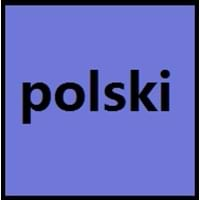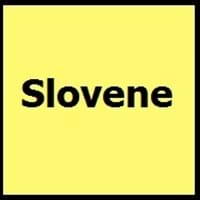Polish and Slovene
Countries
European Union, Poland
European Union, Slovenia
National Language
Poland
Austria, Croatia, Hungary, Italy, Slovenia
Second Language
Belarus, Czech Republic, England, Lithuania, Slovakia, Ukraine
Not spoken in any of the countries
Speaking Continents
Europe
Europe
Minority Language
Belarus, Czech Republic, Hungary, Slovakia, Ukraine
Austria, Hungary, Italy
Regulated By
Polish Language Council (Rada Języka Polskiego)
Slovenian Academy of Sciences and Arts
Interesting Facts
- Polish Language has many loanwords from Russian, Czech, French, Italian, Hebrew and German Languages.
- The earliest writings found in polish language was list of persons and place names, is dated to 1136.
- The Freising Monuments is the oldest preserved records of written Slovene from 10th century.
- The first Slovene book was printed in 1550.
Similar To
Czech, Slovak, Serbian Languages
Serbo-Croatian
Derived From
Not Available
Not Available
Alphabets in
Polish-Alphabets.jpg#200
Slovene-Alphabets.jpg#200
Writing Direction
Left-To-Right, Horizontal
Left-To-Right, Horizontal
How Are You?
Jak się masz?
Kako se imate?
Good Night
dobranoc
Lahko noč
Good Evening
dobry wieczór
Dober večer
Good Afternoon
dzień dobry
Dober dan
Good Morning
Dzień dobry
Dobro jutro
Sorry
Przepraszam
Oprostite
Bye
do widzenia
Nasvidenje
I Love You
kocham Cię
Ljubim te
Excuse Me
przepraszam
Oprostite
Dialect 1
Kashubian
Prekmurje Slovene
Where They Speak
Poland
Hungary, Slovenia
Dialect 2
Masovian
Resian
Where They Speak
Poland
Italy
Dialect 3
Silesian
Styrian
Where They Speak
Czech Republic, Poland
Slovenia
How Many People Speak
Not Available
Speaking Population
Not Available
Native Name
Polski
Not available
Alternative Names
Polnisch, Polski
Slovenian, Slovenscina
French Name
polonais
slovène
German Name
Polnisch
Slowenisch
Pronunciation
[ˈpɔlski]
[slɔˈʋèːnski ˈjɛ̀ːzik], [slɔˈʋèːnʃt͡ʃina]
Language Family
Indo-European Family
Indo-European Family
Subgroup
Slavic
Not Available
Branch
Western
Not Available
Early Forms
Old Polish and Middle Polish
No early forms
Standard Forms
Polish
Slovene
Language Position
Not Available
Signed Forms
System Językowo-Migowy (SJM) (Signed Polish)
Not Available
Scope
Individual
Individual
ISO 639 6
pols
Not Available
Glottocode
poli1260
slov1268
Linguasphere
53-AAA-cc
53-AAA-f
Language Type
Living
Living
Language Linguistic Typology
Subject-Verb-Object
Not Available
Language Morphological Typology
Fusional, Synthetic
Fusional
All Polish and Slovene Dialects
Most languages have dialects where each dialect differ from other dialect with respect to grammar and vocabulary. Here you will get to know all Polish and Slovene dialects. Various dialects of Polish and Slovene language differ in their pronunciations and words. Dialects of Polish are spoken in different Polish Speaking Countries whereas Slovene Dialects are spoken in different Slovene speaking countries. Also the number of people speaking Polish vs Slovene Dialects varies from few thousands to many millions. Some of the Polish dialects include: Kashubian, Masovian. Slovene dialects include: Prekmurje Slovene , Resian. Also learn about dialects in South American Languages and North American Languages.
Polish and Slovene Speaking population
Polish and Slovene speaking population is one of the factors based on which Polish and Slovene languages can be compared. The total count of Polish and Slovene Speaking population in percentage is also given. The percentage of people speaking Polish language is 0.61 % whereas the percentage of people speaking Slovene language is Not Available. When we compare the speaking population of any two languages we get to know which of two languages is more popular. Find more details about how many people speak Polish and Slovene on Polish vs Slovene where you will get native speakers, speaking population in percentage and native names.
Polish and Slovene Language Codes
Polish and Slovene language codes are used in those applications where using language names are tedious. Polish and Slovene Language Codes include all the international language codes, glottocodes and linguasphere.





